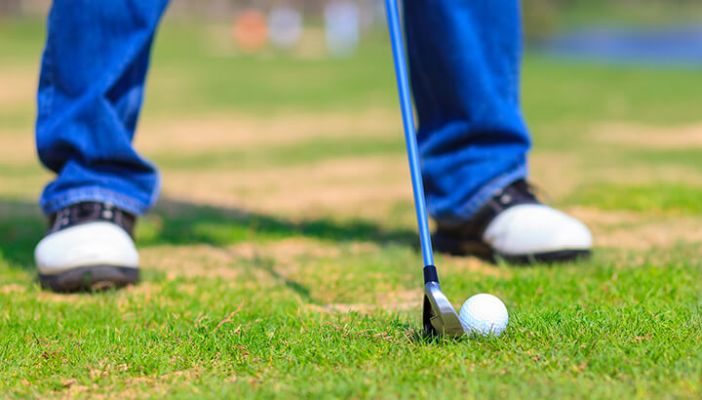Hitting fairways in regulation is a critical measure, as it sets up the second shot options. While the mantra “drive for show, putt for dough” is readily acknowledged, there is room for a revised mantra that states, “He who drives wayward will lose a shot or two every hole, in an attempt to recover the rubbish shot that occurred off the tee.” It’s not quite as catchy but the sentiment is pure fact.
Before providing a surefire drill to improve accuracy it’s important to cover some philosophical ground first:
Challenge off the tee
Course Management 101 states that if the hole is a risk, either due to hazards looming on the driving distance or other challenges, then take a three-wood, driving iron or other club and focus on securing the shot on the fairway — whichever way you can!
What’s the problem?
If driving accuracy is an issue, then make sure there is some professional analysis undertaken of the problem so that the fix is identified and achievable. Distance is not always a problem, so don’t make it one! Slicing, cutting and thinning are issues that require different remedies and drills, so if there is any uncertainty about the specific issue with self-analysis or via a critical friend, then book in for a session with your nearest PGA-endorsed teaching pro and get the real problem diagnosed and remedied.
Drill: Widen your stance
There are several simple drills to improve accuracy with the driver — the objective being to hit the ball straight. In other words, there is an assumption that body alignment is not the problem but other aspects of execution are. A key drill for driving accuracy is using a wider stance.
This driving range drill is part action-research and part instruction. In other words, the drill should be approached with a hyper-awareness about existing practices and the applicability and usefulness of the drill on driving results. Michelle Wie, at the recent Bank of Hope Founders Cup, demonstrated an exaggerated wide stance in an attempt to improve accuracy and reap reward from her notoriously long drives. To be honest, it looked incredibly wide. But, across three rounds, 32/42 fairways had been hit in regulation. It reminded viewers that biomechanics dictate so much of the outcome of this game.
Stand with your legs slightly wider than your shoulders. This might feel a little strange. The first sensation will be that you have a hard and fast sense of an improved center of gravity. Think about it: if you stand with your legs together and someone pushes you, it is likely that you will topple like a skittle. However, with legs widely set it would take more than a casual push to topple this more stable and secure stance.
A wider stance also gives the remainder of the biometric contributors little leeway for error. Hips and upper torso can’t get into too much trouble when the wider stance takes away all the potential to get busy and contort. Hips are forced to stay level all the way through the swing motion. Driving accuracy is often adversely affected by body movement and swaying. The wider stance gives the body little choice but to lock into the feet and legs and can have miraculous results for some.
With the wider stance, you must be ready to drop your right knee in a little more to compensate. At set up, soften knees with the widened stance and during the practice swing. Ensure that you dip the right knee inwards to offset the loss of torque with the wider stance.
Distance versus accuracy
There is likely to be some distance lost with this drill, but it should restore accuracy. Over time, marginal, incremental adjustments can be made to how wide the stance is taken. Reduce the stance width slowly over time, once accuracy has returned and is reliable. At the driving range, don’t be afraid to exaggerate the wide stance and slowly bring feet in, inch by inch and go back wide again, inch by inch, noting the distance versus accuracy results.
It’s reassuring that the “big guns” hit fairways in regulation (FIR) only around 60 percent of the time. Some pressure is lifted on our own game when we’re reminded that the top 10 guys are only striking balls onto the fairway at that rate.
Year to date stats on the PGA Tour show that Brian Stuard leads the FIR chart with 488/657 — equating to a 74.28 percent strike rate. Colt Knost finished first in driving accuracy for 2016 on the PGA Tour, with Stuard in fourth. Both players are well outside the top 100 players on the PGA Tour. So, perhaps the take-home is that driving accuracy is important but has to line up with a bunch of other game components to put great scoring together.
— N. Incoll
